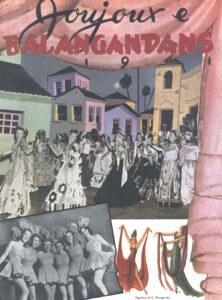- Brazil participates in the New York World’s Fair (The Golden Gate International Exposition) and sends recordings of classical music by several Brazilian composers, such as Carlos Gomes, Alberto Nepomuceno, Alexandre Levy, Henrique Oswald, Lorenzo Fernandes, Francisco Mignone, Camargo Guarnieri, Villa-Lobos, and Radamés Gnattali. By Radamés, the chosen piece is Brazilian Fantasy (1937), specially recorded for the event by the Orquestra do Sindicato Musical do Rio de Janeiro conducted by Romeu Ghipsman, with the author on the piano [1].
Fantasia Brasileira nº1 – for piano and orchestra
I – Animated (excerpt)
Orchestra of the Musical Union of Rio de Janeiro
Romeu Ghipsman, conductor
Radamés Gnattali, piano
(Recording not released commercially.
Private archive of Humberto Franceschi)
- Premieres on July 28 at the Municipal Theater of Rio de Janeiro the Revista Joujoux e balangandans, bringing together the orchestras of radio stations Mayrink Veiga and Nacional, with arrangements and conducting by Radamés Gnattali. In the show, the novelty is the premiere of Aquarela do Brasil, by Ary Barroso. Still that year, Francisco Alves records the song, at Odeon, with a celebrated arrangement by Radamés [2].
Joujoux and balangandans
- In October, Jardel Jércolis’ Company premieres, at Teatro João Caetano, in Rio de Janeiro, the operetta
The Sultan’s Treasure,
by Ariovaldo Pires (Capitão Furtado), with music and conducting by Radamés. - In December, Rádio Nacional presents in its studio, for invited guests only, the first audition of Radamés’ Quartet No. 1 for 2 violins, viola and cello [3], composed that same year. The work, dedicated to Jorge de Lima, was performed by Romeu Ghipsman and Célio Nogueira (violins), Edmundo Blois (viola), and Iberê Gomes Grosso (cello).
- The Odeon label releases Radamés’ choro
Brazilian Soul
and the batucada
I will see you cry
(in partnership with Ocis), with the label’s orchestra. - The movie Onde estás felicidade? is released, directed by Mesquitinha and with music by Radamés and Luciano Perrone, among which the theme song
Where is happiness?
Radamés composes:
-
- Cantilena for string quartet
Quartet No. 1 for 2 violins, viola and cello
– dedicated to his friend Jorge de Lima- Valsas para piano – cycle of 10 waltzes dedicated to the Spanish pianist José Arriola, published in 1945.
- Composer, teacher and conductor Ricardo Tacuchian is born in Rio de Janeiro.
- In Rio de Janeiro (RJ), the group Música Viva [4] was founded by the teacher and composer Hans-Joachim Koellreutter, a German immigrant who arrived in Brazil in 1937.
- Dorival Caymmi records his first album, with Carmen Miranda participating on the track O que é que a baiana tem.
- Carmen Miranda embarca para os EUA com o grupo vocal Bando da Lua [5].
- O Estado Novo de Getúlio Vargas, que muito apreciou o novo tipo de samba lançado por Ary Barroso, o samba-exaltação, passa a recomendar aos compositores populares que abandonem o tema da malandragem carioca em suas músicas.
- The Department of Press and Propaganda (DIP) is created, with the main functions of promoting the government’s acts and censoring the media.
- The US reinforces, in Latin America, the “Good Neighbor Policy” (started in 1933) and lends Brazil 50 million dollars.
- Germany invades Poland, and the Second World War begins.
- The first public television broadcasting takes place in New York City (USA).

